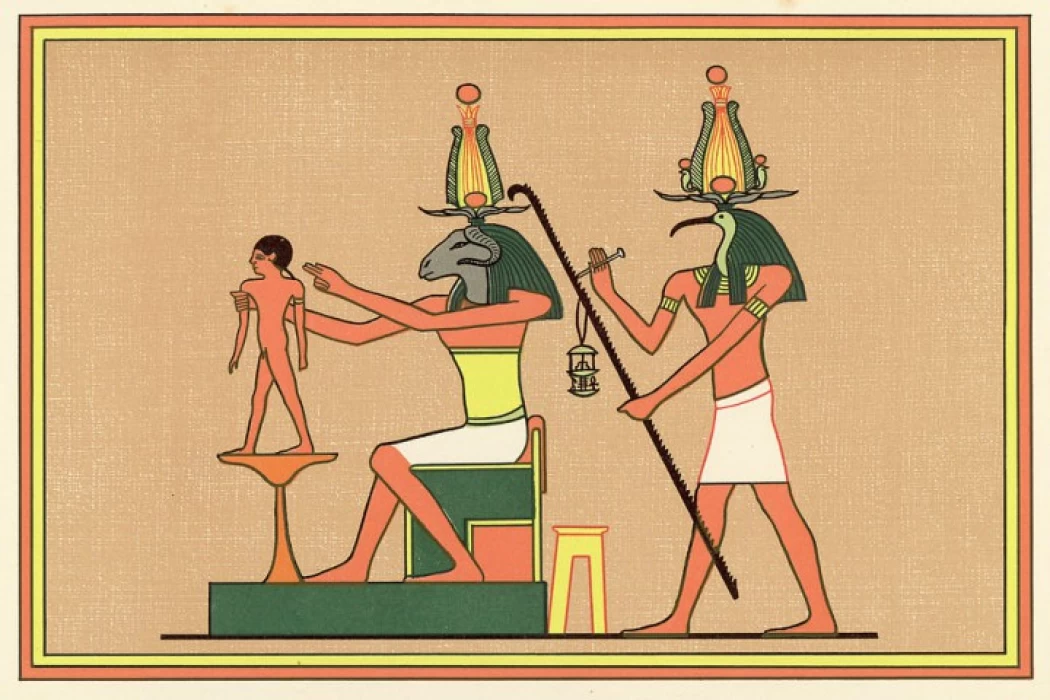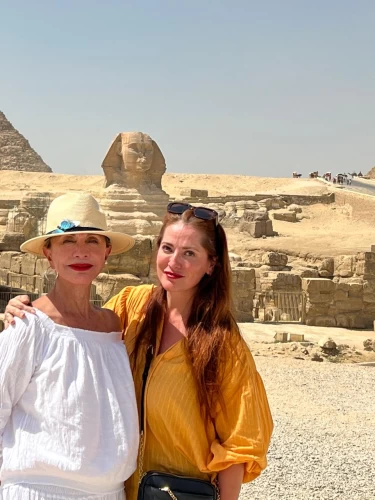
Dios Khnum | Dios de las aguas
Esta deidad era conocida como el dios de las aguas que circulaban en el mundo inferior, de esta forma, cuando el sol naufragó en la oscuridad de la noche, Khnum inconscientemente se unió a él.
Entre las funciones más destacadas de este dios en la religión egipcia, se encuentra la de crear seres vivos, hombres y dioses gracias a su torno alfarero, lugar del que muchos afirmaron que había nacido el huevo primordial.
Cabe mencionar que con la función de alfarería, con la que creó a las personas al mismo tiempo que su Ka, se le dio el nombre de "El padre de padres y madre de madres" de tal manera que Khnum significa literalmente "el modelador ".
De la misma manera, cuentan las leyendas más antiguas, que al principio de los tiempos Khnum se dedicaba a crear a cada hombre y a cada mujer por separado, pero un día, Khnum se despierta cansado de hacer esta tarea, así que sin pensarlo rompió su torno alfarero, introduciendo así una parte diferente en cada mujer, por lo que a cada una de ellas se le dio el papel de dar a luz a las próximas generaciones.
Khnum está representado con un carnero en la cabeza, su cabeza de hombre, una corona de Atef, lleva un cetro con el signo de Ankh, por lo que este dios es parte de la tríada Esna, con Satis.
¿Le gustaría experimentar un viaje a través de la cultura y mitología del antiguo Egipto? puede hacerlo realidad y pasar un día visitando Abydos, Giza, Luxor, Asuán para ver las tumbas de los faraones adornadas con escenas muy claras, detalladas y bellamente pintadas de las diversas deidades del antiguo Egipto, así como muchos otros sitios, ciudades, aventuras y cosas que hacer en El Cairo, usted puede tratar de reservar uno de nuestros viajes a Egipto y Egipto paquetes de viajes muchos grupos privados de visitas guiadas de un día en El Cairo desde el aeropuerto y excursiones de un día en Egipto para explorar la capital de Egipto, El Cairo se puede comprobar muchos de los itinerarios de Egipto o tomar uno de nuestros tours de día completo en El Cairo como
God Khnum
This deity was known as the god of the waters that circulated in the lower world, in this way, when the sun was shipwrecked in the darkness of the night, Khnum unconsciously joined it.
The ram god, whose name is derived from the verb "khnem" meaning "to create," indicating that he was a creator from the beginning. Perhaps because of his creative ability, and because the phonetic connotation of the ram (bA) matches the word "ba" (meaning: spirit), he was referred to by the title (bA Ra).
Among the most outstanding functions of this god in Egyptian religion, is that of creating living beings, men, and gods thanks to his potter's wheel, a place from which many claimed that the primordial egg had been born.
It is worth mentioning that with the pottery function, with which he created people at the same time as his Ka, he was given the name "The father of fathers and mother of mothers" in such a way that Khnum means literally "the modeler".
In the same way, the oldest legends tell, that at the beginning of time, Khnum was dedicated to creating each man and each woman separately, but one day, Khnum woke up tired of doing this task, so without thinking he broke his lathe potter, thus introducing a different part of it in each woman, so each of them was given the role of giving birth to the next generations.
His Association with Other Deities. He was associated with the goddesses Menhet and Neith at the temple of Esna.
Khnum, along with the goddesses Satet and Anqet, formed the First Cataract triad at Elephantine. He was also united at Elephantine with the gods Shu and Horus. On the other hand, the Greeks equated him with the god Amun at Thebes, perhaps because both were associated with the ram.
Elephantine Island and the region surrounding the Aswan Falls were thought to be protected by Khnum. "Lord of the Falls" was another name for him in the Old Kingdom. During the New Kingdom, he and his wife, Satis, and their daughter, Anukis, formed what is known as the "Elephantine Triad." He was worshipped in many areas of Upper Egypt and Nubia, but his worship declined in northern Egypt and the Delta. Among his most important worship sites were Elephantine Island, Philae, Esna, Edfu, Asyut, Kom Ombo, and Mendes. Since the First Dynasty, the belief in sacred rams has been known.
Esna Temple
His temple at Esna is his best-preserved temple, and its texts provide us with a wealth of information about this deity and his worship.
The Greco-Roman Temple of Khnum in Esna was built during the reign of the Roman Emperor Claudius and dedicated to the worship of the ram-headed creator god. All that remains of the temple is the hall, whose ceiling rests on columns. The ceiling, supported by 24 columns, is decorated with images depicting rural scenes and hymns to the god Khnum. This temple was discovered in the 1840s. You can see the carved plant motifs and images of Roman celestial beings, along with hieroglyphic inscriptions representing the rituals performed at the temple.















